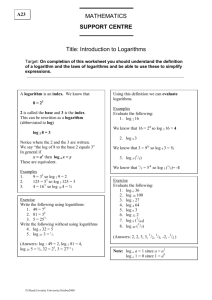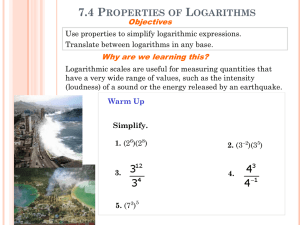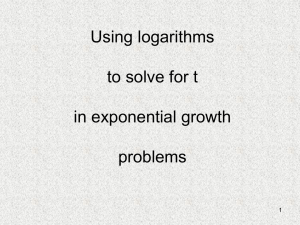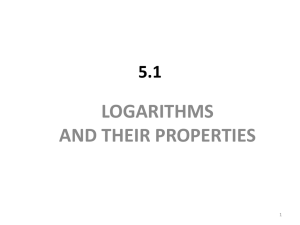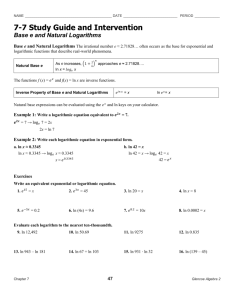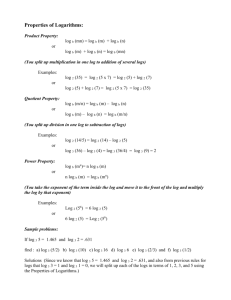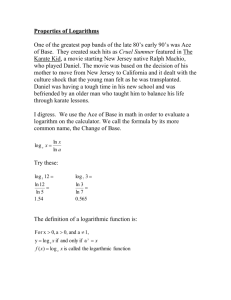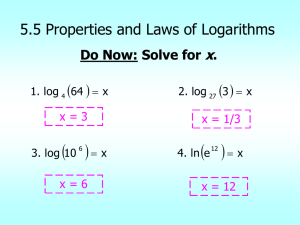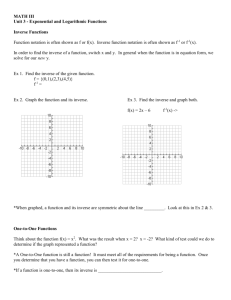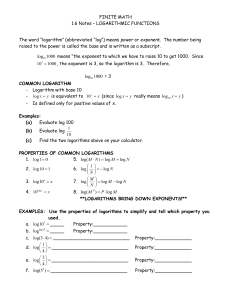Topic 9: Functions and logarithms
advertisement
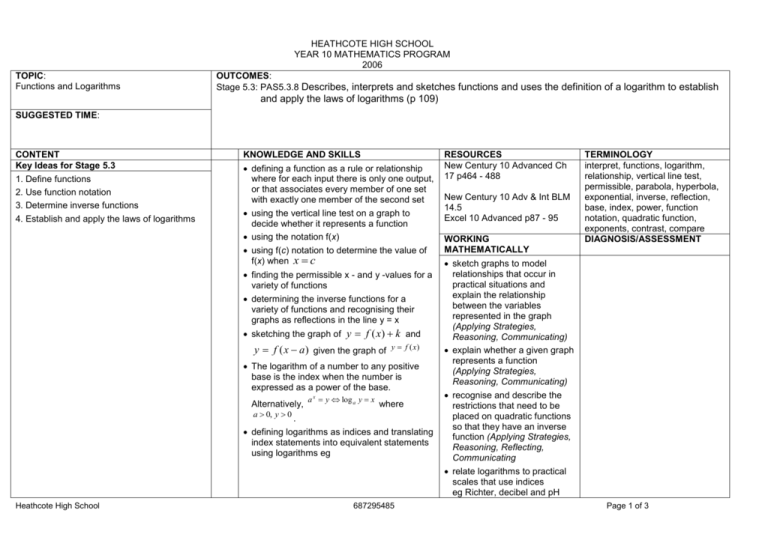
HEATHCOTE HIGH SCHOOL YEAR 10 MATHEMATICS PROGRAM 2006 TOPIC: Functions and Logarithms OUTCOMES: Stage 5.3: PAS5.3.8 Describes, interprets and sketches functions and uses the definition of a logarithm to establish and apply the laws of logarithms (p 109) SUGGESTED TIME: CONTENT Key Ideas for Stage 5.3 1. Define functions 2. Use function notation 3. Determine inverse functions 4. Establish and apply the laws of logarithms KNOWLEDGE AND SKILLS defining a function as a rule or relationship where for each input there is only one output, or that associates every member of one set with exactly one member of the second set using the vertical line test on a graph to decide whether it represents a function using the notation f(x) using f(c) notation to determine the value of f(x) when x c finding the permissible x - and y -values for a variety of functions determining the inverse functions for a variety of functions and recognising their graphs as reflections in the line y = x sketching the graph of y f ( x ) k and y f ( x a ) given the graph of y f (x ) The logarithm of a number to any positive base is the index when the number is expressed as a power of the base. Alternatively, a x y log a y x where a 0, y 0 . defining logarithms as indices and translating index statements into equivalent statements using logarithms eg Heathcote High School 687295485 RESOURCES New Century 10 Advanced Ch 17 p464 - 488 New Century 10 Adv & Int BLM 14.5 Excel 10 Advanced p87 - 95 WORKING MATHEMATICALLY TERMINOLOGY interpret, functions, logarithm, relationship, vertical line test, permissible, parabola, hyperbola, exponential, inverse, reflection, base, index, power, function notation, quadratic function, exponents, contrast, compare DIAGNOSIS/ASSESSMENT sketch graphs to model relationships that occur in practical situations and explain the relationship between the variables represented in the graph (Applying Strategies, Reasoning, Communicating) explain whether a given graph represents a function (Applying Strategies, Reasoning, Communicating) recognise and describe the restrictions that need to be placed on quadratic functions so that they have an inverse function (Applying Strategies, Reasoning, Reflecting, Communicating relate logarithms to practical scales that use indices eg Richter, decibel and pH Page 1 of 3 9 32 , log 3 9 2 1 1 2 1 , log 2 1 2 2 3 4 2 8, log 4 8 3 2 deducing the following laws of logarithms from the laws of indices: (Applying Strategies, Communicating) compare and contrast a set of exponential and logarithmic graphs drawn on the same axes to determine similarities and differences eg y 2x y log 2 x log a x log a y log a ( xy ) x log a x log a y log a ( ) y y 3x y log 3 x n log a x n log a x establishing and using the following results: (Applying Strategies, Reasoning, Communicating) log a a x x log a a 1 log a 1 0 1 log a ( ) log a x x applying the laws of logarithms to evaluate simple expressions eg evaluate the following: log 2 8 log 81 3 log 10 25 log 10 4 3 log 10 2 log 10 (12.5) log 2 18 2 log 2 3 simplifying expressions using the laws of logarithms 5 log a log a 4 a a eg simplify drawing the graphs of the inverse functions y a x and y log a x solving simple equations that contain exponents or logarithms 2t 8, 4t 1 eg Heathcote High School 1 8 2 log 27 3 x, log 4 x 2 687295485 Page 2 of 3 Heathcote High School 687295485 Page 3 of 3
